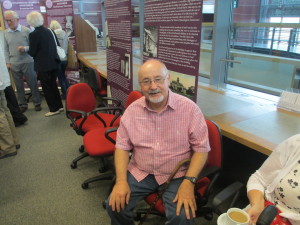Yesterday afternoon we welcomed many of the former patients and staff from Stannington Sanatorium to the Study Centre at Northumberland Archives where they were able to see the results of our latest project. Many of them had visited before as part of an oral history project last year but for some it was their first visit to see the records of Stannington Sanatorium. We were able to explain to them how the files had now been fully catalogued and organised in such a way that if any of them wished to see their own patient file this could be achieved with relative ease. They all also offered up their support to the idea of the patient files being used in the future to facilitate academic research.
With plenty of tea and cake around it was a good opportunity for former patients to meet and chat about their experiences of their time in Stannington and more importantly it was fantastic for us to finally be able to meet some of the people whose records we’ve spent so long working with and see the real people behind the fascinating story of Stannington. One former patient in particular, Betty Jewitt, also very kindly deposited some photographs she had from Stannington, which will now be held in the archive and available for the public to view.
The press were in attendance and Stannington featured on yesterday evening’s Look North and you can see a clip from this on the BBC website: http://www.bbc.co.uk/news/uk-england-tyne-33604134 Stannington will also soon feature in the local newspapers, so look out there for more! There were a series of banners on display yesterday for everyone to read about the history of Stannington and we hope to see these tour local venues in the north east shortly and will let you all know where they’ll be going and when.
A big thank you to everyone that came along!











